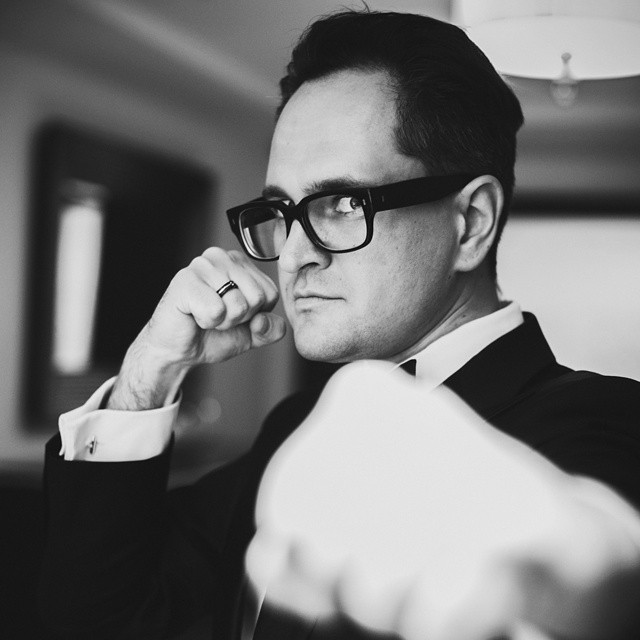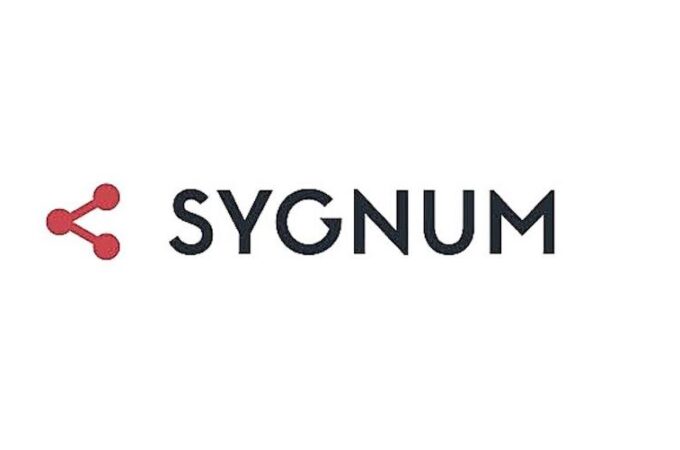
Unitary Asian Cryptocurrency Would Revolutionise Fintech: Life.SREDA’s Vladislav Solodkiy
DEALSTREETASIA: The recent entry of several fintech-focused accelerators into the Singapore startup ecosystem is laying the foundations for a sophisticated fintech ecosystem in the city-state. This development has played a significant part in the Russian venture capital firm Life.SREDA’s shifting its HQ from Moscow to Singapore. With the recent move by Life.SREDA VC to migrate to Singapore, along with its proposed $100 million second fund, DEALSTREETASIA caught up with its managing partner Vladislav Solodkiy, who is also the Chairman of the Board of LifePay Global, which provides mPos services across CIS and Asia Pacific markets.Edited Excerpts
What compelled you to shift the headquarters from Moscow to Singapore?
There were some reasons to do it. Firstly, two years ago, when we organised our annual fintech conference – Money of the Future – which is held every February in London, we began to track deals from different countries. If you go back two years, Asia wasn’t even present in the competition happening in the fintech space. In the last year, Asia has become the second largest fintech player in the world after the US, and we see that it’s a very dynamic market.
In their 2015 Gates Annual Letter, Bill and Melinda Gates talked about their four focus points. One item they mentioned was banking. Fintech is emerging as a solution for the unbanked people of Africa and Asia. It’s not magic to help them become part of the banking infrastructure via cards to mobile wallets. The real magic is to jump from conventional banking technology to fintech solutions.
We tried to invest in some Asian startups remotely, but it was impossible when we were sited in Moscow to communicate with Asian startups, when compared to communicating with Europe. When we approached Asian fintech entrepreneurs, there were negligible responses or otherwise reluctant to disclose details and technologies. In short, LIfe.SREDA lacked mindshare and brand presence in Asian markets.
Since the acquisition of iboxPro, how has the company performed and how do you see the fintech space progressing in Southeast Asia?
It’s not a simple process to invest or acquire company after announcing it and I cannot talk on some details as there’s still some way to go. We are open to investments in other fintech companies and various supporting businesses which provide fintech for merchants (e.g. MPOS). We’re also open to investing in and acquisition of startups in other countries.
We’ve invested only 10 percent of capital from our second fund and we see that in Asia, there is a rapidly growing market. And we have to spend the other 90% in the 6 months, at least by the end of the year. We’re aiming to invest in 20-30 fintech startups in Singapore and ASEAN as a whole. It’s not so easy as in the US, where you can track companies and send them an email or try to organise a conversation.
In the US, after a few weeks, you’ll have a lot of requests for details and you’ll have to curate the deals and see where to invest it. In Asia, its a longer process. Now, we spent most of our time in meeting with VC’s and startups, describing our plans and vision – excluding discussions on capital – of building a fintech ecosystem here.
We’re currently in the process of filing requests for introductions and referrals and are open to making new investments. We’re very hungry for dealflow and investments, especially in the mPOS space. We’re currently in negotations with a few companies.
Which are the current major geographic markets that LifePay Global and Life.SREDA invest in? Are there any notable startup ventures you’ve invested in that you feel are very promising?
It’s not important which country we invest in, as we’re very open. We’ve divided Asian markets into three segments. There are the mature markets like Singapore and Hong Kong which have lots of infrastructure and cards. The second segment are emerging countries like Malaysia and Thailand, which have a lot of cards but without much infrastructure to accept it and are thinking of invest in online payment companies there.
Then you have the unbanked countries like Indonesia, Myanmar or Cambodia, which we are very interested in. Conducting acquisitions will not be so useful, as they have a small amount of card infrastructure.
M-Pesa, a large Africa-based firm, provides fintech solutions like mobile wallets and P2P payments for unbanked customers. A similar solution would be very interesting for use in unbanked countries. The Chinese market is very closed and difficult, with regards to opportunities for fintech companies there. I’ve spent time meeting with people based in the Chinese market and exploring opportunities there and in India. They’re both the biggest markets but are very closed ecosystems.
Our strategy is to start in ASEAN, while investing in China and India in parallel to our efforts in ASEAN. We’re open to every Asian country and have had particularly interesting conversations with a fintech startup in US. We want to invest directly into the parent company and their CEO is interested in doing joint ventures with local banks and telcos.
It will be interesting to give European or US startups the chance to conduct joint ventures with banks and our own invested startups here. We also think that Singtel is doing a lot of interesting things and hope to explore collaborations with Singtel, as well as other telco firms and banks to set up new products providing financial solutions to their customers.
It’s one way to differentiate your brand from competitors without any investment. Life.SREDA would invest to hedge the risk, while banks or telcos could invest in terms of resources realted to their IT back-end and distribution channels. We can develop cashflows in partnership with them and share stake with them in a joint venture, with minimal risk to them.
What do you look for in firms that you invest in? Do you invest in the concept or in the person?
Look at founder. If you look at the US market, it belongs to products and technologies. They’ve got hundreds of teams deeply involved in developing ideas and products. The Asian, CIS and African markets are execution markets by contrast. They provide the most interesting applications of concepts, in comparison with the US and UK markets.
We don’t know anything about execution or distribution channels or agent models or partnerships in these markets. We believe that we have to trust in our local guys, to help them imagine and realise their execution processes. We can only provide the opportunity to communicate with similar prodcuts from other markets and next stage investors, qualify their valuation and provide information.
We can share with any potential partners market intelligence and prospects. Its not only about numbers and cashflow but the vision of products, monetisation strategy and how to open new partnerships. We invest in the future of the company and their potential.
What is your perspective on the emergence of digital commodities and technologies like Bitcoin and cryptocurrencies?
Now we see a fair amount of speculation in the Bitcoin space, with a lot of critics trying to suppress Bitcoin. It works very well, but only for well-educated, well-informed and tech-savvy populations.
If we’re talking about ordinary people without the required financial literacy or technical literacy, then we will see a lot of bubbles. In Russia, we had MMM, which was the biggest company in early 1990’s in the ex-USSR. It created a bubble and was a pyramid scheme. And during this time, nobody understood what were shares or stock exchanges and how they functioned. Everybody lost money and it was one of the biggest bubbles in the history of the Russia, if not the world.
The idea of Bitcoin is a good idea, in terms of excluding central banks and bureaucratic people from the ecosystems. There’s more transparency in the processes of the currency. In Asia, we have a lot of countries with different currencies and a problem emerges with remittances. I think that bitcoin or other cryptocurrencies – based on blockchain technologies – could be very useful.
It might be very beneficial to establish an Asian cryptocurrency for remittances and transfers, as there’s a lot of unbanked people in places with a lack of reliable banking infrastructure. This is extremely crucial to ordinary people and is a question for the future, as well as for regulators. HK regulators don’t want to regulate crytocurrency because they have a lot of bitcoin mining and they’re afraid of dealing with a bitcoin or cryptocurrency bubble
Having a universal cryptocurrency for Asian markets would provide a unitary platform for different markets and provide a universal fintech solution for ordinary people and the vast unbanked segment of consumers in Asia.
Does Life.SREDA intend to explore the Bitcoin and cryptocurrency space in any manner?
Right now, we don’t understand its potential and are in the process of educating ourselves. We’ll be prepared to look more deeply at it once we know more about it and the risks. We are open to investing in cryptocurrency and blockchain-based startups but don’t want to invest in Bitcoin. We would invest in startups only if we understand it.
And preferably with a government that’s open to supporting a strategy for accepting common Asian cryptocurrencies. This would facilitate the universalisation of remittance and transfer protocols within Asia.
How is the investment scene in CIS markets, and what particular sectors would you recommend to Asian investors seeking opportunities there?
This region is very influenced by the Russian economy. Alot of workers from these countries work in Russia, and they have a large number of contracts with Russia in the oil & gas industry. Now that the Russian economy has declined, workers from other countries are starting to leave Russia and return home. People from Belorussia and Kazakhstan visit Moscow to buy our own local clothes and cars at prices cheaper than in their own countreies.
I think that we will see some problems with their own economies in a year or so, as they are very influenced by and linked to the Russian economy. If you talk about investments, you also have to talk about entrepreneurship and investments from the founder’s perspective. If you’re talking about APAC economies, you’ll see a lot of SMEs and a great culture of entrepreneurship, not necessarily in technology but in other industries. If you look at CIS markets, a lot of them are based on big government-linked companies with a very small contribution by SMEs to the economy.
From that perspective, it’s not interesting to invest in any vertical. You need to have close connections with guys who are close to the local government. If you have such connections or bribe them, then you’ll have success in the market. Its not about entrepreneurship but hidden communications and personal networks.
What Asian market stands out to you?
Myanmar is one of the best opportunities to provide something extraordinary in the fintech space. It has 50 million people and they only had their first smartphone in 2012. They’ve got a very weak banking system and fast-growing mobile communications. But it presents a market with very high-risk investments. Malaysia, Thailand and Vietnam are also interesting countries.
Your career prior to being involved in LifePay and Life.SREDA extensively involves marketing. What are the major aspects of being a marketer that have contributed to your current professional success?
I’d like to use Leonid Soloviev of DST Global as an example. He’s one of the senior partners and has extensive marketing experience. My marketing experience and investment activities now rely on close connections. With marketing, you have to understand your audience, how to describe your products to them and testing your ideas for validity.
You need to know how to listen to feedback from your target audience and pivot your ideas rapidly. Most of the success boils down to reaching and communicating your product to the target market, your positioning and how you tested your idea.
But there’s a dark side to marketing, in terms of discussing things like the valuation and attracting investments. It’s a marketing game rather than a real business process. When you estimate valuation, you’re not talking about present or past valuation but future valuation and need to imagine this future. It’s a marketing process of describing to investors, not a business process like product development.
In our team we have a lot of jokes about myself that I look at it s a marketing guy, rather than a CEO. I have Igor, our investment director, who’s very concrete and pragmatic. He’s not pessimist but a realist and tries to be look at every opportunity from the other side and tries to keep me grounded. He also helps to look out for weaknesses in potential steps.
(At this point in the interview Igor adds his input)
Igor Pesin: Main part of venture capital is about the product and its potential rather than due diligence. Vision of the prod. And vision of market and customers’s need & behaviour – then go more pragmatic area
With fintech startups, what are the most important aspects of marketing and advertising that entrepreneurs must emphasise?
It depends on each country. If you launch your fintech startup in the US market, you need to only start your landing page, show some sketches of your future app, write some ideas about how you provide some new tech into service and you’ll have subscribers and potential customers within a month.
Simple, a fintech startup from US, didn’t have any product in the begining. They just had an idea and had more than 250k subscribers without advertising. And in the UK, we see a similar situation as well. When we discus Germany, Russia and Asian markets, you have to change the way you communicate. More than a year ago, I visited San Francisco to meet up with people from Square, which has a $6 billion valuation. And they hosted a meeting in the Blue Bottle Cafe, which had an audience of hipsters, journalists and young entrepreneurs.
If you start your product, don’t start from the most profitable clients. Choose those clients that will use your product in the right way and have interesting customers using their services . You won’t have a lot of profit but you’ll have right usage and exposure , plus word-of-mouth advertising. This is important to investors. Numbers are boring but investors want to know who the most interesting clients are. Choose the right clients via the right advertising campaign for appropriate usage and word-of-mouth advertising.
When I met Settle, a Ukrainian startup based in San Francisco, these guys decided to meet with us in our office. They viewed the Internet, found out about the cafe below the office and got their product integrated into the payment of the cafe. A few days before the meeting, they got their application installed. They held the meeting there and when the waiter came with the bill, they were using their app.
In a Fast Company interview I read, John Maeda, who’s a Partner of Kleiner Perkins, highlighted the prevailing trends in design. You need to invest in research, content and design. It’s not so much our marketing, but one of our best achievements is that people know us not because we’re rich but because we’re smart. They know about Life.SREDA from research and content, as well as our guerilla marketing campaign. We don’t need to advertise or announce our own investments or conferences, but we differentiate ourselves by our content.





